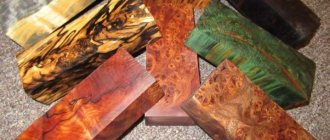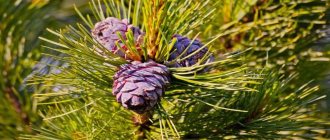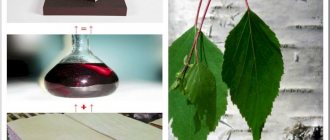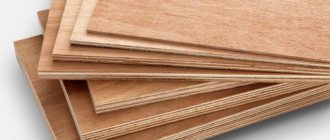Kap (“witch’s broom”) and Suvel (“svil”). Differences and similarities
05/15/2017 The tree is one of the most common plants on earth.
Nature is incredibly generous, since it has given a person not only the opportunity to admire the beauty of trunks and leaves, but also to derive practical benefits from wood, because for several thousand years people have been using wooden products in their everyday life, building houses, boats, making furniture and household utensils, producing musical instruments, crafts, etc.
Today there is no material that can completely replace the wonderful natural properties of wood, since its density, color, texture, texture pattern and shades are unique in each case.
The natural uniqueness of the wood pattern is especially evident in the burl
and
suveli
(spherical or teardrop-shaped growths on trees), which pundits identified as diseases.
These formations create a complex, enchanting pattern of wood fibers inside the trunk or root, consisting of an interweaving of colored lines, spots, inclusions, smoothly flowing into each other, which thus form a pattern of special beauty. Thanks to the richness of colors and lines, both burl and suvel are excellent natural materials for the production of various crafts, decorations, and interior items, since they have an exclusive texture (it is impossible to find two identical patterns in nature), and special strength and durability.
Let's try to determine how burl and suvel differ from each other, and what they have in common.
Cap
Cap ( cap root)
or as it is also popularly called “
witch’s broom
”) is a rounded, benign formation on a trunk or branch with a large number of woody nodules. The burl differs from the suveli in that it has many bumps on its outer side, which are created thanks to accessory and dormant buds. These formations look like dark spikes and tubercles, which is why you can often see small shoots and twigs growing directly from the burl.
According to some scientists, a burl on a tree appears as a result of a sharp side effect that led to changes in the development of the plant, that is, it can have both a natural and anthropogenic cause. Other scientists believe that the appearance of an ugly tumor on a tree may be a hereditary deformity.
Burl is found mainly on deciduous trees, such as oak, linden, maple, alder, poplar, walnut, but most often it can be found on birch.
It has been noticed that on average, for one tree with a burl, there are from three to five thousand trees without such formation, so finding a good burl (unlike suveli) is quite difficult.
Most often on trees there is a root burl, which can be simply gigantic in size.
Typically caporoot
It has a faint texture inside and a weak color contrast pattern.
The burl formed on the branch often has the shape of an irregular ball and, unlike the bonnet root, its internal texture on the cross section is replete with patterns with the cores of knots and has a peculiar “needle-like” structure in the form of a small ornament with dashes and dots. The internal fibers of wood intertwine with each other in different directions, creating a picturesque pattern, and inclusions of dormant buds make the texture even richer, so burl is most often used as a decorative element in the manufacture of various crafts, knife handles, gun butts, original dishes, as well as souvenirs .
Due to the strong density of its texture and the huge number of knots, the burl is not easy to process, but at the same time it is perfectly sanded and polished.
The main color of the internal texture of the burl is various shades of black or brown, ocher. Even if you take two halves of the same burl, they will still differ in both color and pattern, since the structure of the build-up is heterogeneous.
The wood of the burl is stronger than that of the suveli, and fifty to seventy percent stronger than that of the tree on which it was formed.
Small items are also made from burl: boxes, cigarette cases, hairpins, earrings, bracelets, and small jewelry.
There is no point in creating a carved pattern on the burl, since the texture and texture of the wood is beautiful in itself.
Suvel
The formation of suveli is caused by a tree disease (cancer), and it most often appears as a twisted and woven growth in a lump, which is why it is also called suveli
.
Typically, the wisp grows two to three times faster than the tree itself and has a drop-shaped or spherical shape located around the trunk or branch. The main difference between suveli and burl is that it is formed not from dormant buds, but due to the complex interweaving of annual rings curved in different directions (hence the name svil). By this feature, cones on a tree can be easily distinguished from each other.
Growths (especially on birch) are quite common, although the reason for their formation is not fully understood. Presumably, the formation of a tangle can be initiated by a fungus or mechanical damage to the tree bark.
Suvel is also popularly called wood bone
, since its cut resembles marble stains (with the same iridescence and radial section), and the thin parts are visible through and look like bone. But the density of the fabrics, as mentioned above, is less in suveli than in burl, so its wood is less durable.
A suveli growth can grow to gigantic proportions (for example, in the Vatican there is a font carved from a single piece of wood). However, the finer the pattern, the richer and brighter the pattern inside; however, the pattern with ornamental elements will in any case be softer (without the “spikes” and “needles” patterns required for a burl).
The internal texture of suveli has a delicate pearlescent tint, and the colors of each can vary greatly and contain white, yellow (reminiscent of amber), as well as brown, pinkish and green. The shade of suveli depends on where the tree grows and how it is dried.
You can form Suvel yourself. To do this, simply tie a tree trunk or branch with wire. At the site of the constriction, a convex formation created by annual rings will soon appear.
Suvel also lends itself well to processing, can be sanded and polished well, and its mother-of-pearl cut, reminiscent of marble, plays with streaks, has a unique texture and seems to glow from within.
Of course, it is impossible to determine by the type of suveli how beautiful the pattern will be, but the more clumsy and twisted the growth looks externally, the richer its texture and pattern will be inside.
The root (butt) part of suveli is considered the most valuable. It is of interest to woodcarvers, artists, knife makers, sculptors and cabinetmakers, who choose this material for its exclusive cut pattern, high strength, rot resistance and unique processing ability.
Finding and preparing growths
Naturally, it is necessary to look for bulges on a tree in the forest. At the same time, many people confuse burl and svil with the similar mushroom Inonotus obliquus
), which most often lives on birch trees and is called chaga or black birch mushroom.
You need to learn to determine where the mushroom is and where the growth is.
It is best to cut down saplings and burls in the fall (September - October), when the trees stop the natural movement of sap and begin preparing for winter.
It must be remembered that without a good saw, it is not easy to cut down a suvel or burl, especially if they are very clumsy, so this work is best done with a chainsaw, but it should be taken into account that the chains of the tool quickly become dull due to the special strength of the build-up.
If you don’t have a chainsaw, you will have to work with a hand saw, but it must have sharp, well-sharpened teeth so that the master does not torment himself or the tree and does not injure it in vain.
To avoid the formation of a hollow that is undesirable for the tree, the cut site must be immediately covered with garden varnish, painted over with oil paint, or covered with clay.
When a massive caporoot
It must be remembered that cutting it is fraught with serious consequences for the tree, and as a result of the injury it may die.
All of the above properties of both burl and wood elevate these unique materials to the pinnacle of value among other types of wood, since they are used both in the finishing of various utilitarian items and in the production of jewelry, small plastic items and tableware.
Share on social networks:
What is made from driftwood
Designers actively use wood blanks to create the most incredible objects, products and compositions.
Furniture
Large knotty driftwood makes beautiful and durable tables, chairs, and stools. If you have straight trunks available, they will make an excellent rack.
Only the legs of chairs or a table can be made from small driftwood. A headboard made of wood with a weird shape looks good.
Bed made of driftwood and trunks
Panel
This decor is hung on the wall instead of a painting. To make it, driftwood of various shapes, logs and individual branches are used. Fastening is carried out using nails or reliable glue.
Photo frames
Photos in exclusive frames will make the interior catchy and memorable. You need to take suitable twigs or other parts of the tree and paste over the finished frame, giving it an unusual shape.
Candlesticks and vases
To make a candlestick, you can use a piece of wood of any shape. You need to drill a hole in it and install a candle in a metal frame. Vases are also made from any driftwood, or glued together from thin twigs using hot glue.
Lamps and fixtures
Designers actively use wood to create various lighting fixtures. The most popular are ceiling lamps made from logs, floor lamps and table lamps made from roots, and sconces made from wood cuts.
Watch
The finished clock can be inserted into a natural recess in the wood, or you can first cut a hole with a chisel and then place the mechanism in it. The clock will look like a natural element of driftwood and will become a real highlight of the interior.
Decor
Thanks to their non-standard shape, driftwood will serve as an excellent basis for making decorations for walls, floors, tabletop souvenirs, and three-dimensional figurines. Such creations will fit perfectly into an interior made in eco and country styles.
Driftwood and other materials
Wood combines well with glass, metal, plexiglass, and epoxy resin. For example, a table with a fancy driftwood leg and a tempered glass tabletop looks original and luxurious.






